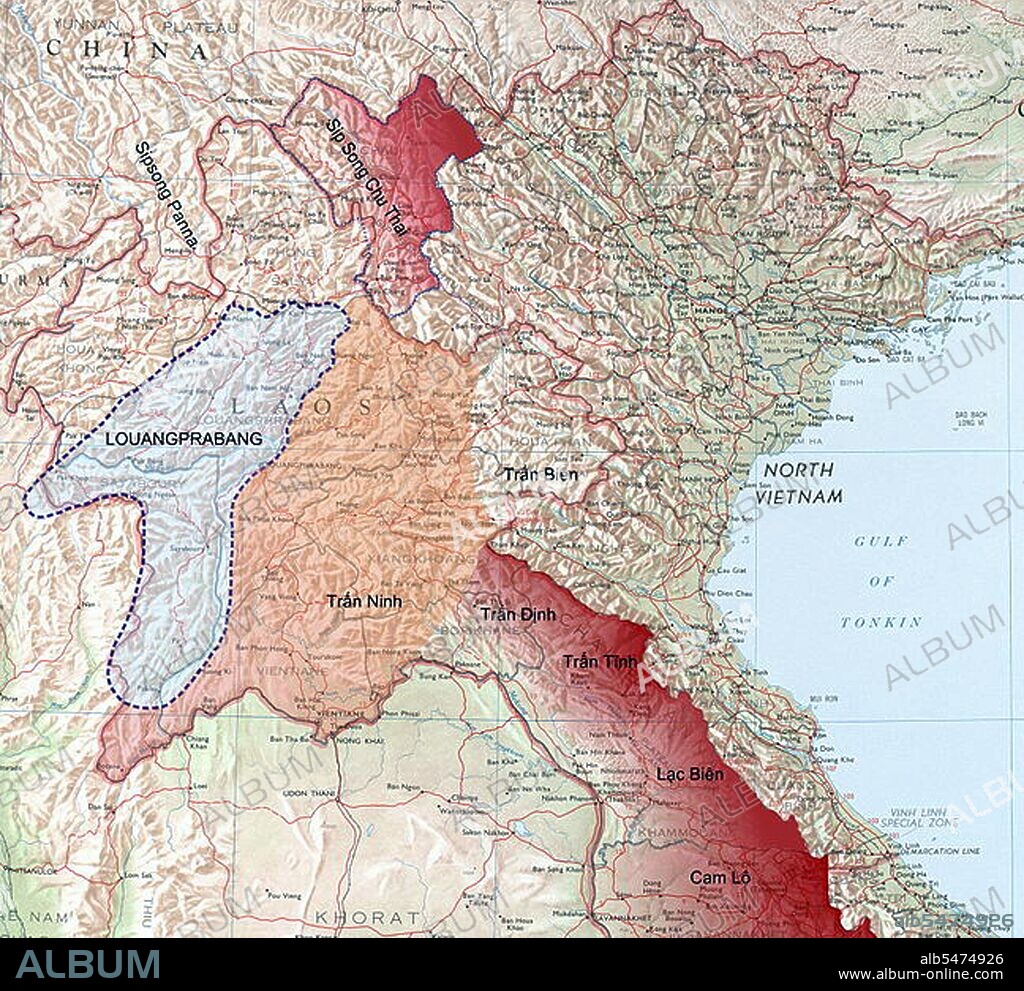alb5474926
Vietnam-Laos: Map showing location of the autonomous Tai Principality of Sipsongchuthai in relation to Tonkin and to Luang Prabang, c. 1893. Rotceh (CC BY-SA 3.0 License)

|
Añadir a otro lightbox |
|
Añadir a otro lightbox |



¿Ya tienes cuenta? Iniciar sesión
¿No tienes cuenta? Regístrate
Compra esta imagen.
Selecciona el uso:

Título:
Vietnam-Laos: Map showing location of the autonomous Tai Principality of Sipsongchuthai in relation to Tonkin and to Luang Prabang, c. 1893. Rotceh (CC BY-SA 3.0 License)
Descripción:
Ver traducción automática
During the late 19th century, all the territory stretching from Dien Bien Phu in the south to the Chinese frontier in the north formed an autonomous region called Sipsongchutai, or ‘Twelve Tai Principalities’. It was ruled over by a hereditary White Tai prince from his capital at Lai Chau and paid tribute, at one time or another, to Siam, Vietnam or China, and sometimes to all three. At this time the White Tai chieftain was Kham Sing, known to the Vietnamese as Deo Van Seng. He ruled over Sipsongchutai from his capital at Lai Chau, but was old and tired, so real power had already passed to his eldest son, the fiercely independent Kham Hum, known to the Vietnamese (and to the recently arrived French) as Deo Van Tri. Neither Deo Van Seng nor Deo Van Tri wanted to submit completely either to Bangkok or to Hanoi, preferring to pursue the delicate balancing act between the two that had for long years allowed continuing autonomy. But times were changing fast, maps being drawn and frontiers delimited as modern nation states came into being in mainland Southeast Asia. Accordingly in 1889 Deo Van Tri signed a treaty with France making Sipsongchutai a semi-autonomous region within the French Protectorate of Tonkin – and therefore, ultimately, a part of Vietnam.
Crédito:
Album / Pictures From History/Universal Images Group
Autorizaciones:
Modelo: No - Propiedad: No
¿Preguntas relacionadas con los derechos?
¿Preguntas relacionadas con los derechos?
Tamaño imagen:
4300 x 3939 px | 48.5 MB
Tamaño impresión:
36.4 x 33.4 cm | 14.3 x 13.1 in (300 dpi)
Palabras clave:
ASIA • ASIATICO • CARTOGRAFIA • GOBERNANTE • HISTORIA • HISTORICO • LORD • MAPA • MONARCA • MONARQUIA • PRINCE • PRINCIPE • VIETNAM • VIETNAMITA
 Pinterest
Pinterest Twitter
Twitter Facebook
Facebook Copiar enlace
Copiar enlace Email
Email
